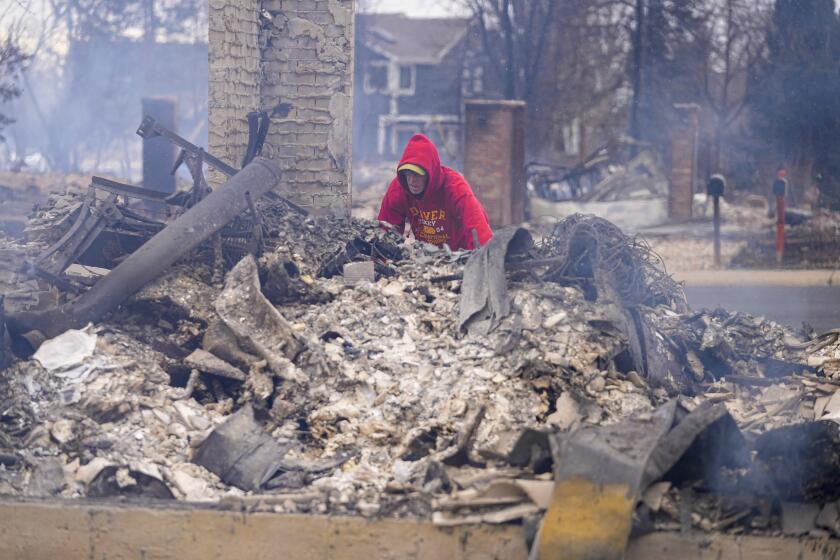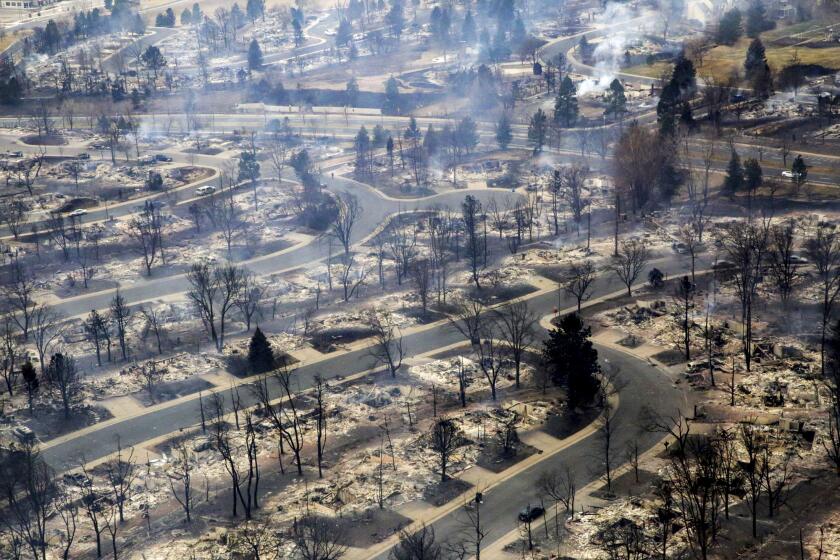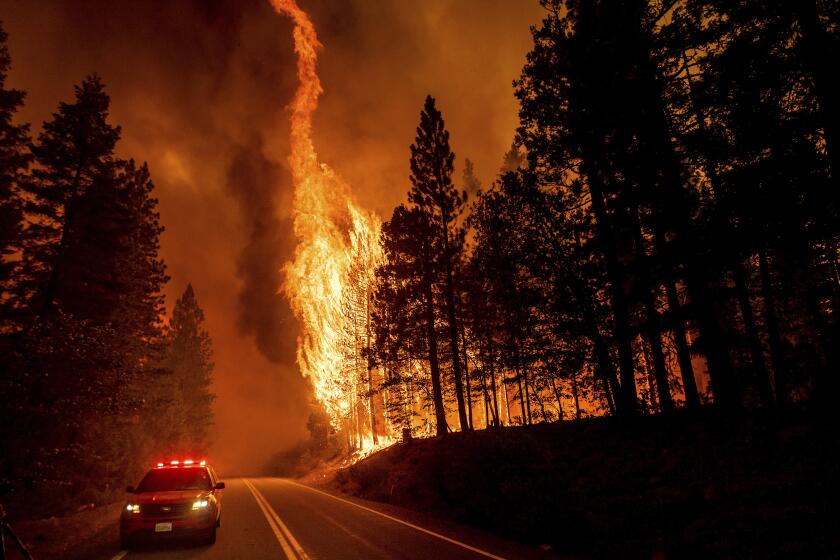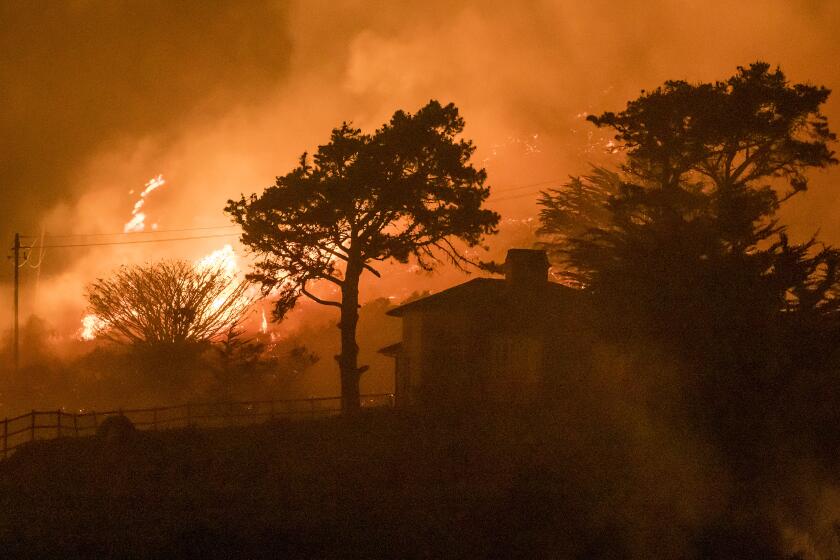Destructive fire in Colorado last month might have begun underground
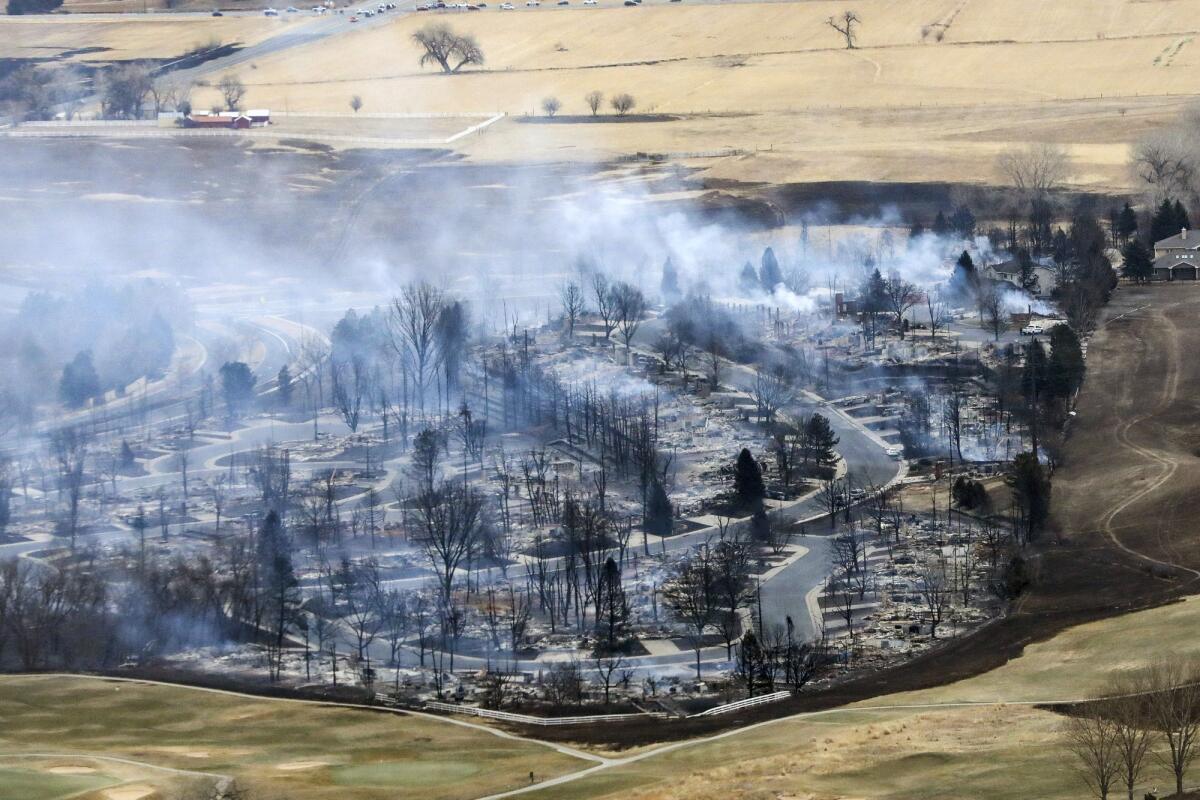
DENVER â A fire raging in an underground Colorado coal field in 1883 sent so much smoke pouring from cracks in the ground that the scene was likened to burning volcanoes and the stateâs first mining inspector deemed the blaze âimpossible to extinguish.â
Nearly 140 years later, two fires still smolder in the now-abandoned coal field near Boulder â the same area where a wildfire last month destroyed more than 1,000 homes and buildings and killed at least one person.
Itâs still unknown what caused the December blaze, which became the most destructive in Colorado history, but Boulder County authorities have said theyâre investigating the areaâs abandoned coal mines as one of several possible causes, along with power lines, human activity and other possibilities.
Could smoldering coal have started such a fire? History shows the answer is yes, with at least two Colorado blazes in the past 20 years blamed on mine fires that spread to the surface. And in Montana last summer, slow-burning coal reserves fanned by winds sparked a pair of blazes that burned 267 square miles on and around the Northern Cheyenne Indian Reservation.
Across the U.S., at least 259 underground mine fires burned in more than a dozen states as of last September, according to data from the federal Office of Surface Mining. There are hundreds, possibly thousands, more undocumented blazes in coal seams that have never been mined, researchers and government officials say.
Globally, such fires are also a problem, including in India, Australia and South Africa. In China, the worldâs largest coal producer, an estimated 10 million to 200 million tons of the fuel annually burn or are left inaccessible by fires, according to the U.S. Geological Survey.
The flames ripped through at least 9.4 square miles and left nearly 1,000 homes and other buildings destroyed in suburbs between Denver and Boulder.
As climate change leads to drought across larges swaths of the western U.S. that are already seeing longer and more destructive fire seasons, experts say smoldering coal fires will pose a continuing threat.
Such fires can be ignited by lightning, humans and even spontaneously at temperatures as low as 86 degrees, said Jurgen Brune a Colorado School of Mines engineering professor. Many are impossible to put out, slowly burning underground as the combustion feeds off a small amount of oxygen present in the coal, he said.
âCovering it up and trying to take away the oxygen from the fire puts out most fires. Not for coal fires,â Brune said.
Underground coal seams burn unpredictably, and fires can break through to the surface without warning long after they start, he said.
A winter conflagration that quickly tore through suburban neighborhoods near Boulder, Colo., last week should shatter illusions about safety across the Western U.S. as the warming climate primes conditions for disastrous fires.
âItâs like trying to predict an earthquake,â Brune said. âWith all the technology we have today they are not coming any closer to predicting them. The same goes for a coal fire.â
The fires emit toxic mercury and the greenhouse gas carbon dioxide, and cause sinkholes when the groundâs surface collapses into burned cavities below. In Centralia, Pa., the fumes and subsidence from a coal fire that started beneath the town in 1962 got so bad that more than 1,000 people eventually relocated at a cost of $42 million.
The estimated future cost to control the 200 known abandoned mine blazes across the U.S. is almost $900 million, according to the Office of Surface Mining database.
In the wake of last summerâs fires, local officials in Montana plan to map out burning seams across the stateâs southeast in coming months using a federal grant. Controlling them will be difficult and could cost a minimum of $300,000 per site, said Bobbi Vannattan with the Rosebud Conservation District, which is helping to coordinate the mapping.
Record heat. Raging fires. What are the solutions?
Get Boiling Point, our newsletter about climate change, the environment and building a more sustainable California.
You may occasionally receive promotional content from the Los Angeles Times.
âThe problem with coal seam fires is we donât know how deep they are or how wide they are until you get in there and start digging,â she said.
In Colorado, officials were monitoring at least 38 underground coal fires as of 2019.
Boulder County Sheriffâs Office spokesperson Carrie Haverfield declined to specify which mines were being investigated in relation to the Dec. 30 blaze or what prompted authoritiesâ interest, which was first reported by KUSA-TV.
At least three efforts were made by authorities to quench or reduce damage from a blaze that the state mine inspector first encountered more than a century ago at the abandoned Marshall Mine, located on parkland in the vicinity of where investigators believe the recent fire started.
A confounding collection of Californians have been accused of arson this year. Experts weigh in on the causes and consequences of the complex crime.
The first of those efforts came in 1982, when federal officials drilled into the ground to investigate how far the fire extended and later sought to smother it with a two-foot layer of dirt, according to a U.S. Geological Survey report.
In 2005, a small brush fire was traced back to a hot vent from the fire. Crews from Boulder removed vegetation in the area and federal officials tried to fill the vent and others with rocks to try to protect against another fire, according to the Office of Surface Mining. In 2016, after federal officials said the state had taken control of the site, workers excavated and filled in two areas where the ground had subsided after fire consumed the underground coal.
When the site was visited two years later by workers for a state contractor, Tetra Tech, they found no evidence of fire â no melting snow, no smoky odors. The company recommended annual monitoring of the site because of its past erratic behavior but no new steps to abate the potential hazard.
âThe fireâs activity is very low and thus presents little potential to start a surface fire,â Tetra Tech wrote in a 2019 report prepared for the Colorado Division of Reclamation, Mining and Safety.
The Colorado fire, which started Friday night in Big Sur, was sparked by embers from a pile burn meant to clear combustible fuels.
Generally, the responsibility of monitoring coal mine fires falls to the property owner, according to the division. The Marshall Mine fire sits under an open-space park owned by the city of Boulder, near a state highway.
Boulder officials said they donât have responsibility to do work on the fire. However, the city is required to notify the state if rangers or trail crews at the popular hiking area see smoke or shifts, city spokesperson Sarah Huntley said.
The state mining division said it was not notified of any changes at the mine fire since the 2019 report.
The state receives federal funding to help property owners monitor or mitigate abandoned coal mine fires. But the mining division cannot require any work be done at the sites, spokesperson Chris Arend said.
More to Read
Sign up for Essential California
The most important California stories and recommendations in your inbox every morning.
You may occasionally receive promotional content from the Los Angeles Times.
